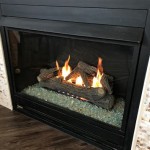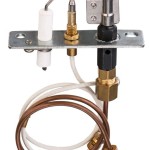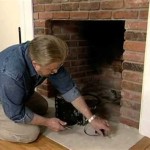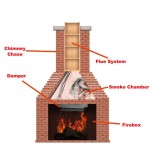How to Refinish a Tile Fireplace: A Comprehensive Guide
A tile fireplace can be a striking focal point in a living space, adding warmth and character. However, over time, wear and tear can diminish its aesthetic appeal. This article provides a detailed guide on how to refinish a tile fireplace, covering preparation, cleaning, repair, and sealing. Refinishing, rather than replacing, can be a cost-effective way to revitalize the fireplace and update its appearance.
Before commencing any refinishing project, it's crucial to assess the condition of the existing tile and grout. Examine the surface for cracks, chips, loose tiles, and staining. This initial assessment will determine the extent of the necessary repairs and the appropriate refinishing techniques. Safety is paramount. Always wear appropriate personal protective equipment (PPE), including safety glasses, gloves, and a dust mask or respirator, especially when dealing with cleaning agents or power tools.
Key Point 1: Preparation and Cleaning
Proper preparation is essential for a successful refinishing project. The first step involves thoroughly cleaning the tile surface to remove any dirt, grime, soot, or previous coatings. This ensures that any new coatings or sealants will adhere properly. Begin by sweeping or vacuuming the fireplace to remove loose debris. Next, use a mild detergent or specialized tile cleaner and warm water to scrub the entire surface. A stiff-bristled brush or sponge can be used to agitate the dirt and grime.
For stubborn stains or soot buildup, consider using a stronger cleaning solution specifically designed for tile and grout. Ensure the product is compatible with the type of tile you have (ceramic, porcelain, natural stone, etc.). Before applying any harsh chemicals to the entire surface, test a small, inconspicuous area to check for discoloration or damage. Follow the manufacturer's instructions carefully regarding application, dwell time, and rinsing.
After cleaning, thoroughly rinse the tile surface with clean water to remove any residual cleaning solution. Use a clean cloth or sponge to wipe away excess water. Allow the tile to dry completely before proceeding to the next step. This may take several hours, depending on the ambient humidity and the type of tile. A dehumidifier can be used to speed up the drying process if necessary.
Protect the surrounding area by taping off the edges of the fireplace with painter's tape. This will prevent cleaning solutions or refinishing materials from damaging the mantel, wall, or flooring. Cover the floor in front of the fireplace with a drop cloth or plastic sheeting to protect it from spills and debris.
Inspect the grout lines carefully for any signs of mold or mildew. If present, treat the affected areas with a mold and mildew remover specifically designed for tile and grout. Allow the solution to dwell according to the manufacturer's instructions, then scrub the grout lines with a grout brush. Rinse thoroughly with clean water and allow to dry completely.
Key Point 2: Repairing Damaged Tile and Grout
Once the tile surface is clean and dry, address any damage, such as cracks, chips, or loose tiles. Small cracks and chips can often be repaired with epoxy or tile repair kits that are color-matched to the existing tile. Follow the manufacturer's instructions carefully when using these repair products. Clean the damaged area thoroughly and apply the epoxy or repair compound. Allow it to cure completely before sanding smooth and blending with the surrounding tile.
For larger cracks or chips, it may be necessary to replace the damaged tile. Carefully remove the old tile using a chisel and hammer. Be careful not to damage the surrounding tiles. Scrape away any old mortar or adhesive from the substrate. Apply a new layer of thin-set mortar to the back of the replacement tile and firmly press it into place. Use spacers to ensure consistent grout lines between the new tile and the existing tiles. Allow the mortar to cure completely before grouting.
If the grout is cracked, crumbling, or missing, it will need to be repaired or replaced. Use a grout saw or a similar tool to carefully remove the old grout. Be careful not to damage the edges of the tiles. Vacuum up any loose debris and dust. Mix new grout according to the manufacturer's instructions. Apply the grout to the grout lines using a grout float, pressing it firmly into the gaps. Remove excess grout with a damp sponge, working diagonally across the tile surface. Allow the grout to dry according to the manufacturer's instructions, then buff the tile surface with a clean, dry cloth to remove any grout haze.
When selecting grout, choose a type that is appropriate for fireplace applications. Epoxy grout is a good option because it is stain-resistant and durable, making it ideal for areas that are exposed to heat and soot. Seal the grout lines after completing the repairs to protect them from moisture and stains.
Key Point 3: Applying a Sealant and Enhancing Appearance
After cleaning and repairing the tile and grout, apply a sealant to protect the surface from future stains, moisture, and damage. The type of sealant you choose will depend on the type of tile you have. For porous tiles, such as natural stone, a penetrating sealant is recommended. This type of sealant soaks into the tile and grout, creating a barrier against moisture and stains. For non-porous tiles, such as ceramic or porcelain, a topical sealant may be sufficient. This type of sealant forms a protective layer on the surface of the tile.
Before applying the sealant, ensure the tile and grout are completely dry. Apply the sealant according to the manufacturer's instructions, using a brush, roller, or sprayer. Allow the sealant to penetrate the tile and grout for the recommended dwell time, then wipe away any excess with a clean cloth. Apply multiple coats of sealant for added protection, allowing each coat to dry completely before applying the next one. Avoid using the fireplace for at least 24-48 hours after applying the sealant to allow it to cure properly.
Consider using a tile enhancer to bring out the natural colors and patterns of the tile. Tile enhancers are available in a variety of finishes, from matte to glossy. Before applying a tile enhancer, test it on a small, inconspicuous area to check for compatibility and desired appearance. Apply the tile enhancer according to the manufacturer's instructions, using a brush or cloth. Wipe away any excess and allow it to dry completely.
Another way to enhance the appearance of the fireplace is to paint the firebox. Use a high-heat paint specifically designed for fireplaces. Clean the firebox thoroughly before painting and apply several thin coats of paint, allowing each coat to dry completely. This will give the firebox a fresh, clean look.
Finally, consider adding decorative elements to the fireplace, such as a new mantel, fireplace screen, or decorative accessories. These additions can further enhance the fireplace's aesthetic appeal and create a warm and inviting atmosphere.
By following these steps, it's possible to refinish a tile fireplace effectively and economically, restoring its beauty and extending its lifespan. This process requires patience, attention to detail, and adherence to safety precautions.

How To Paint Tile Easy Fireplace Makeover Setting For Four Interiors

Painting Fireplace Tile The Ultimate Guide Jessica Welling Interiors

How To Paint A Tile Fireplace Amber Simmons

Painting Fireplace Tile Ridiculously Easy Diy Makeover Tiny Hands Tidy Home

How To Paint Fireplace Tile Diy Makeover A Blossoming Life

How To Paint A Tile Fireplace Amber Simmons

Before And After The Best Room Makeovers Paint Fireplace Tile

How To Paint A Tile Fireplace Des And Sses

How To Paint Fireplace Tile Diy Makeover A Blossoming Life

Fireplace Tile Can Be Painted To Completely Update Your Living Room
Related Posts








